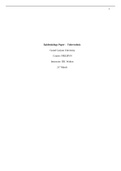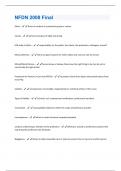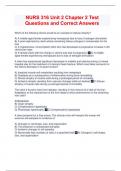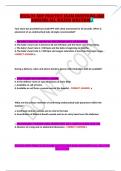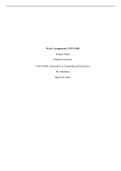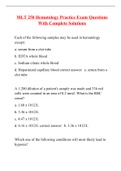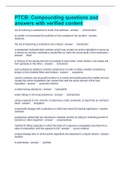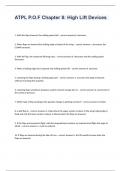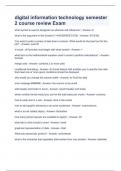Solutions 100% Correct
Accounting Principle #1
Economic Entity Assumption* The business and its financial transactions are separate
from the owner's personal financial transactions.
Accounting Principle #4
Cost Principle 1) Financial transactions are shown, forever, as the original and historical
cost.
2) We do NOT adjust for inflation or the increase or decrease in the value of an item.
Accounting Principle #7
Matching Principle* 1) forces us to use the accrual basis of accounting.
2) Expenses are matched with revenue (ex: cost of a product is shown when sold--sales
commission is reflected in the period the sale is recorded).
Accounting Principle #8
Revenue Recognition Principle 1) Revenue/sales/income is shown in the financial
statement when a service is performed or a good is sold.
, Bookkeeping Basics Exam Questions With
Solutions 100% Correct
2) It doesn't matter when cash is actually received for the service performed or the good sold.
Accounting Principle #10
Conservatism Principle* When faced with a choice on financial statements, choose the
option that reflects: 1) decrease in net income, and/or 2) decrease in assets/equity, and/or increase
in liabilities.
Order of Accounts in
Chart of Accounts Assets
Liabilities
Equity
Revenue
Expenses
Trial Balance two-column summary of all debits and credits in the Chart of Accounts
1) Is shown at end of an accounting period
2) Lists all the accounts in numerical order with assets first and expenses last

